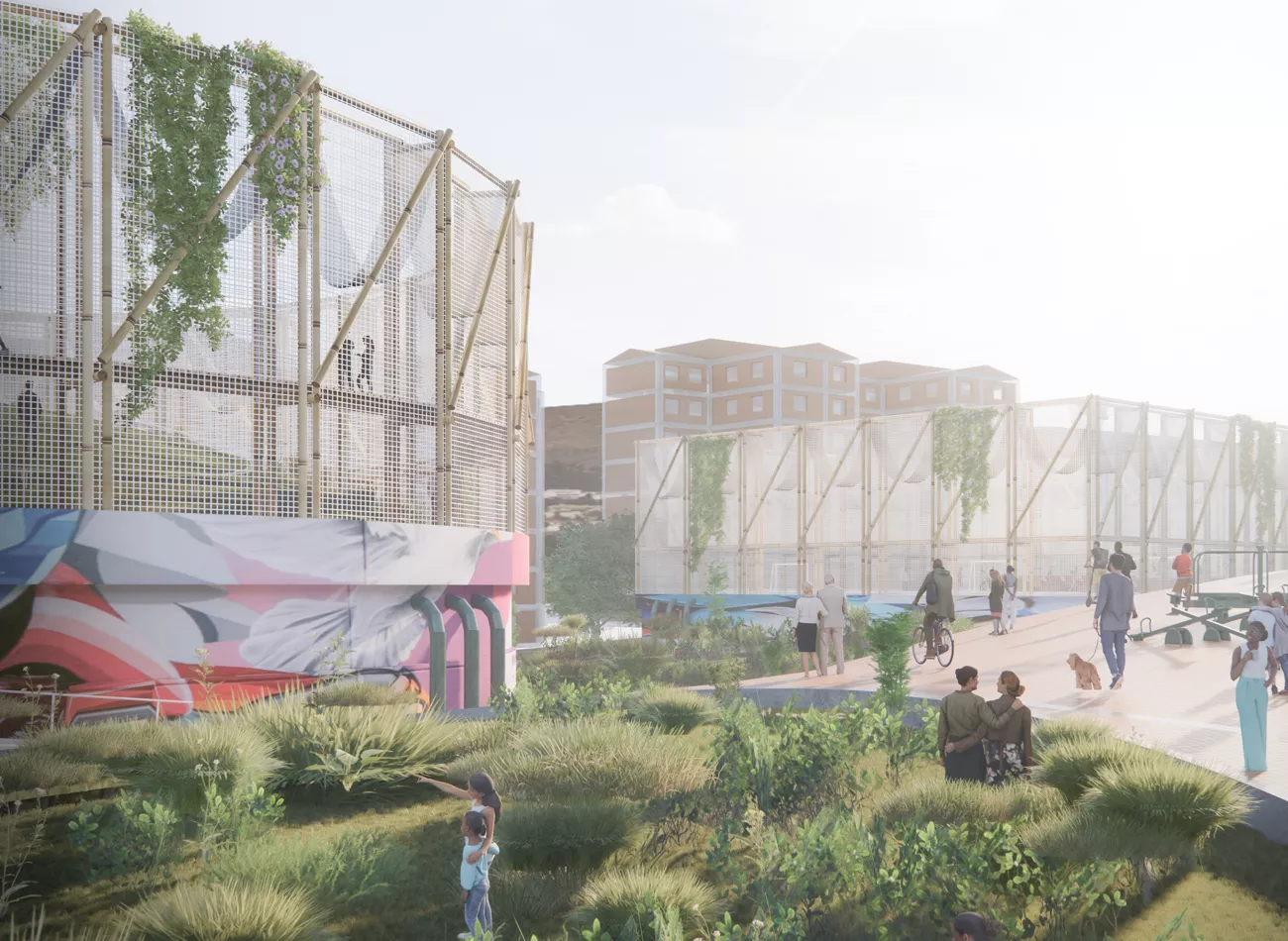
WHAT WAS THE SOCIAL INCLUSION IDEA CHALLENGE?
The first IDEA Challenge, those registered had the opportunity to conceptualize one of the six UVAS (Units of Articulated Life) that were not built, specifically: El Tanque La Almería located in the Laureles neighborhood in Medellín, Colombia. The very concept of a UVA consists of reclaiming non-places that were intended to serve a merely functional purpose and rethinking them as inclusive and safe public spaces for the entire community.
WHAT WERE THE DELIVERABLES?
The participants delivered a set of clearly thought-out concepts that followed a list of requirements. We looked for creative solutions to the problem raised. An important part of the challenge was to work only with the information provided in the downloads section.
FORMATS
PDF or JPG file.
The presentation had to include a maximum of 2 sheets of maximum 100 cm x 70 cm horizontally and include the following:
- Data sheet
- Descriptive report (1,200 words in 12-point arial font) Site proposal
- Siting
- Graphics (renders, sketches, montages…)
- Design proposal
- Suggested materiality
- Optionally, a video could be sent with basic specifications with a duration of up to 5 minutes, where relevant aspects of the proposal are described. It must be a dynamic piece that addresses an additional language to the limitations of the graphic representation of the plates, which provides the jury with a general vision of the contestant’s concept. It can be in Spanish or English, in which case it must be subtitled in Spanish.
The presentation technique is open and flexible as long as it respects the indicated format.

EVALUATION CRITERIA
The evaluation criteria is based on the following points:
- The project proposal for the new UVA provides effective public space. In other words, it is a project that is integrated into the network of public spaces and existing facilities and improves the existing urban fabric especially where the pedestrian dwells.
- Creation of equipment or infrastructure for the city, understanding the neighborhood where the tank is currently located as a context (identifying the key points and nearby landmarks) and relating to it.
- The program needs as defined by previous UVAs which were successfully inserted in a neighborhood, and adding or more of the following public spaces: auditorium, classrooms, library, cafeteria, commercial premises, administrative office, among others.
- A clear demonstration of the designation of soft and hard areas to generate new landscaping while preserving existing trees.
- Inclusive spaces.
PUNCTUATION SYSTEM
Table used by the juries to qualify the proposals and assign the scores based on the previously described criteria.
| No. | Criteria | Maximum score |
| 1 | Understanding and respect for the context | 20 |
| 2 | Effective public space | 20 |
| 3 | Solve the programing needs | 20 |
| 4 | Approach to new landscaping | 20 |
| 5 | Inclusive spaces | 20 |
| 6 | 100 |
WINNER ANNOUNCEMENT
A live conversation was held to announce the official winner and the jury offered their comments and feedback on the chosen proposal. To access the recording of this conversation click here

UVA La Participación
Most of the socio-economic repercussions of the pandemic are still present in the cities of Colombia, and designing urban projects under this philosophy guarantees viable and high-impact projects.
To guarantee the success of a proposal, in the city of Medellin, an investigation of urban initiatives and typologies that require low investment and have a great impact on an urban and local scale was carried out.
As a first step, an analysis of the network of existing UVAs was carried out and the most successful use they have in common was extrapolated and applied here. The most effective program component, in terms of budget and impact, which all these interventions share are the Urban Gardens and, curiously, it was an initiative developed by EPM after the design and construction of the network of UVAs.
Urban gardens are spaces of high social inclusiveness that invite community participation and appropriation for their development. They also require minimal investment, creating ideal urban solutions to a post-pandemic situation in the city of Medellín and for the proposal.
The second step of the research was to analyze low-investment, high-impact urban typologies in the Santa Monica neighborhood to ensure that the proposal met local needs. And thanks to this, it is concluded that synthetic courts, parks/squares are the least expensive public typologies that are constantly used by the community. Converting these typologies into essential uses to include in the UVA.

THE WINNER
IDEA CHALLENGE
Alejandro Saldarriaga
Architect graduated from the Universidad de los Andes and candidate for a Master’s in Architecture II at Harvard University. He has had a professional training on an international scale where he has worked in architecture offices in Bogotá, Boston, Copenhagen, and Zurich.
He has been awarded in several international competitions including the Kaira Looro (2018 Edition), The Brexit Monuments Competition, The COVID Challenge (organized by the SCA) and one of the latest editions of Bee Breeders. In March 2020 he received the gold distinction at the “Design that Educates Awards 2020” under the category of “Responsive Architecture”.
He recently founded the ATELIER office and together with the GB-US office they have designed 4 ephemeral projects in the public space in Bogotá. These have been published internationally including publications by New York Metropolis magazine, Arquine magazine, and a Harvard University article.







Leave A Comment